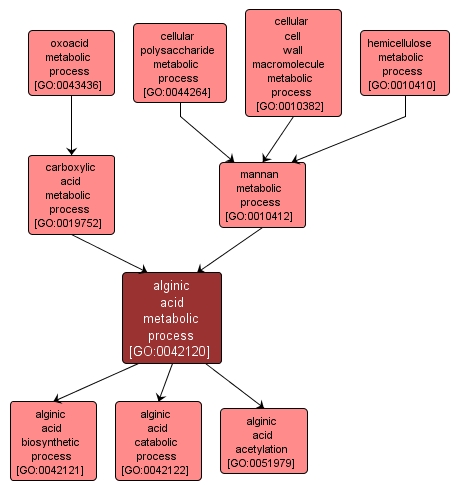GO TERM SUMMARY
|
| Name: |
alginic acid metabolic process |
| Acc: |
GO:0042120 |
| Aspect: |
Biological Process |
| Desc: |
The chemical reactions and pathways involving alginic acid, a hydrophilic polysaccharide occurring in, for example, the cell walls of brown algae (brown seaweeds). |
Synonyms:
- alginic acid metabolism
- alginate metabolic process
- alginate metabolism
|
|

|
INTERACTIVE GO GRAPH
|














